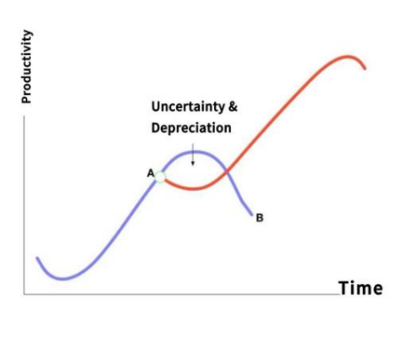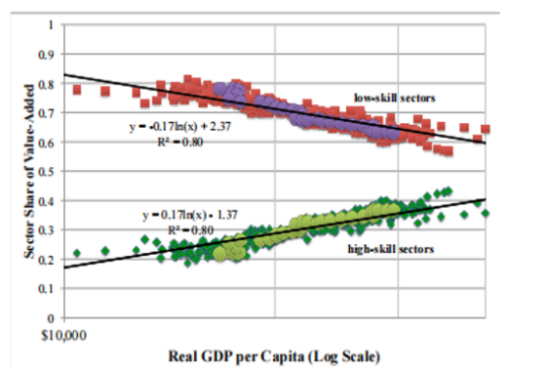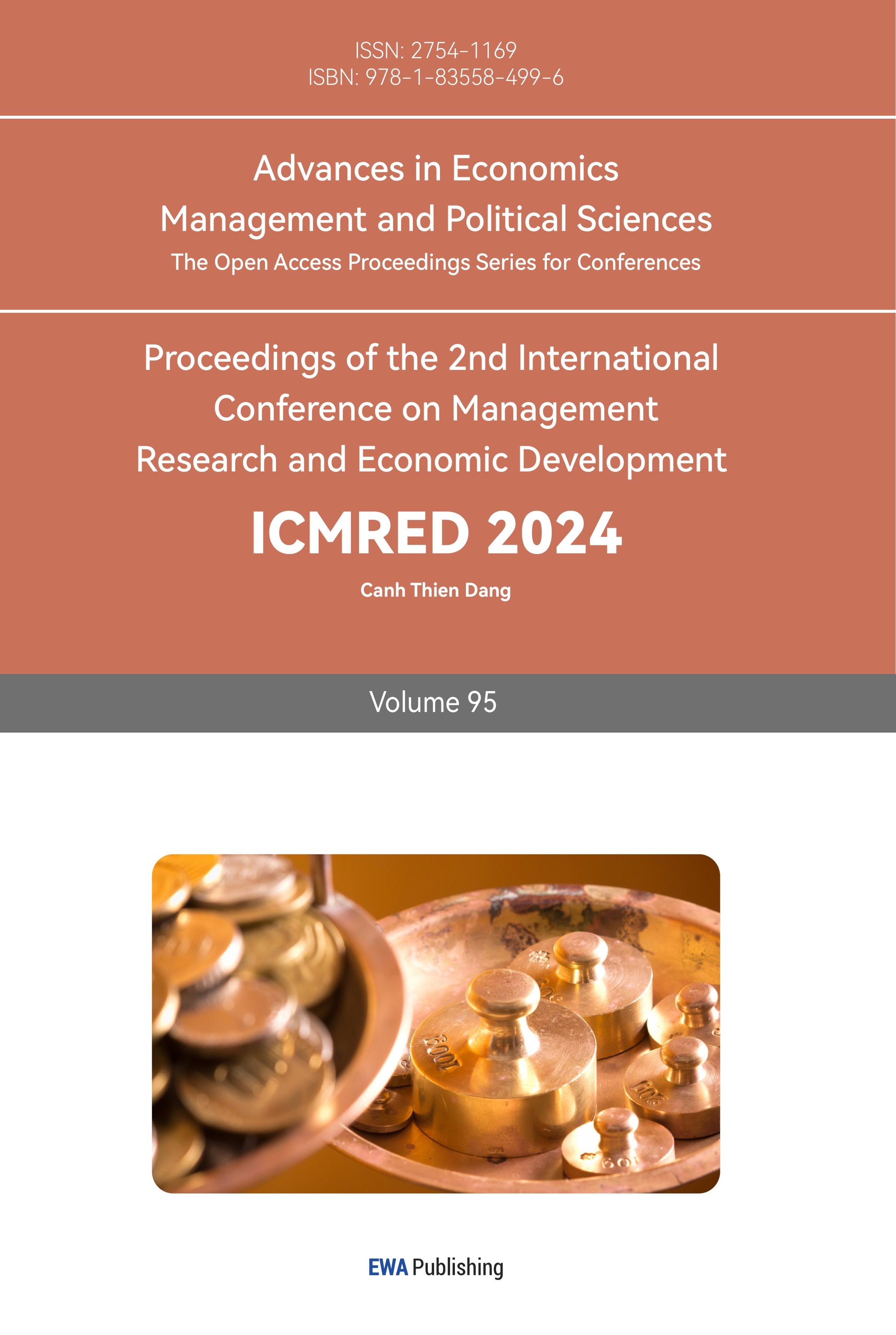1. Introduction
The emergence of artificial intelligence has significantly impacted and transformed the labor market, ushering in substantial changes while concurrently opening up new avenues for employment and expansion. The evolution of artificial intelligence has dramatically influenced the labor market, leading to substantial transformations and paving the way for the emergence of fresh employment prospects and areas for growth. The proliferation of artificial intelligence has sparked profound changes in the labor market, revolutionizing its landscape and generating novel opportunities for employment and advancement.
In a research report released on March 27th, Goldman Sachs analysts Joseph Briggs and Devesh Kodnani highlighted the significant impact of artificial intelligence breakthroughs, predicting that approximately 300 million jobs globally will be displaced by generative AI. However, for around 7% of American workers, over half of their job responsibilities could feasibly be carried out by AI, rendering them more susceptible to being replaced. A paper from OpenAI revealed that, according to analyses of machine large language models conducted by scholars and businesses, an estimated 80% of the U.S. workforce will experience some level of impact from ChatGPT on at least 10% of their job tasks.
Indeed, the interplay between artificial intelligence and the contemporary labor market can be categorized into two distinct phenomena: coexistence and substitution. A portion of artificial intelligence technology within the labor market involves coexisting alongside the workforce, encompassing functionalities like voice assistants, image recognition, and natural language processing. These tasks are ones that were previously beyond the capability of the human workforce.
Nevertheless, there exist artificial intelligence technologies that are poised to supplant segments of the labor force, precipitating a surge in unemployment. According to CNN, projections indicate that by 2027, 69 million novel job opportunities will be generated globally, while 83 million existing jobs will be rendered obsolete within the same timeframe, resulting in a net loss of 14 million jobs. This equates to a 2% reduction in current worldwide employment levels. In the era of AI, numerous professions face the specter of obsolescence. Occupations characterized by simple, repetitive tasks governed by strict rules, data analysis, and predictive functions are particularly susceptible to automation by AI. For instance, cashier positions may be replaced by automated cashier systems, while ticket inspectors could be supplanted by automated ticket readers.
2. Analysis 1
Both the labor market and artificial intelligence have undergone adaptations to align with the ongoing revolution in science and technology.
Following Robert Solow's model, the incorporation of AI technology into production extends to include technology as a crucial factor of production. The productivity gains driven by technology have a considerable impact on economic expansion, capital accumulation, and the demand for labor. A scenario of balanced growth is depicted. The horizontal axis symbolizes the capital-labor ratio (K/L), while the vertical axis represents output (Y). The productivity curve, denoted by the S curve in the graph, illustrates the varying output levels corresponding to different capital-labor ratios. As the capital-labor ratio approaches the equilibrium ratio, the growth rates of capital and output will surpass the growth rate of the labor force, ultimately attaining balanced growth.
AI intervention has the potential to enhance efficiency and boost productivity levels within the labor market. By undergoing career retraining, embracing lifelong learning, and adapting to the evolving nature of work, the labor market has actively undertaken initiatives to adjust to the integration of AI technology.
To address these short-term structural shifts, governments and various institutions have taken proactive measures to mitigate the risks associated with AI technology in the labor market. Primary emphasis has been placed on the establishment of lifelong learning initiatives within the labor market, aimed at aiding workers in consistently enhancing and acquiring new skills to effectively adapt to the ever-evolving technologies and requirements [1].
The source from the "Deploying Generative AI in US State Governments: Pilot, Scale, Adopt" report by the McKinsey Global Institute. It visually represents the implementation of AI across diverse sectors and industries [2].
(1) Innovations in Systems: AI tools can offer coding assistance to facilitate the modernization of outdated IT systems. These tools can analyze legacy COBOL applications, propose alternative code revisions in different languages, generate technical documentation, and recommend testing scenarios for the updated code.
(2) Tailored Content Creation: AI tools empower swift creation of personalized content, encompassing text, imagery, and voice, enabling governments to cater to the unique needs of residents on a customized basis. For instance, social service case managers can leverage AI content solutions to extract pertinent information from individual cases and offer tailored assistance.
(3) Advanced Skill Development Tools: AI-powered learning platforms can provide customized learning opportunities, pinpoint individual skill deficiencies, and adapt educational content accordingly. Skill enhancement and retraining initiatives can utilize AI-based evaluations to assist employees in acquiring new skills that align with evolving job requirements [3].
In conclusion, the evolving role of AI in educational requirements and work environments can facilitate the delivery of more effective and personalized services, boost workforce productivity, and enhance overall customer experiences.
3. Analysis 2
Temporary Decline in Production Efficiency:
1)Short-term production efficiency reduction
In a short run, production efficiency will reduce. This can be explained by the theory of creative destruction popularized by the Joseph Schumpeter. “Creative destruction describes the deliberate dismantling of established processes in order to make way for improved methods of production.” (Creative Destruction: Out With the Old, in With the New, CAROL M. KOPP, February 20, 2023) Waste of resources means inefficiency. Therefore, in facing the challenges and opportunities brought by AI, the key is to cultivate skills and innovation capabilities that adapt to the new opportunity [4].

Figure 1: Uncertainty and depreciation
2)Long-term productivity improvements: increase high-skilled employees
In the long term, the demand for labor skills and quality is becoming increasingly pivotal. The data presented in the EUKLEMS Labour Input Data graph illustrates the value added in both low-skilled and high-skilled sectors [5], it is observed that the value added in the low-skilled sector has declined as real GDP has grown, as shown in Figure 2. Conversely, the high-skilled sector has experienced a contrasting phenomenon.

Figure 2: Real GDP and sector share
4. Analysis 3
4.1. Rising unemployment rate in a short run: jobs replaced by AI
Table 1: Jobs replaced by AI
AI matrix | manufacturing industry | service sector |
manufacturing industry | a | b |
service sector | c | d |
AI matrix=(1-a)*(1-d)-(0-b)*(0-c) | ||
The latest wave of AI technology is mainly focus on Generative AI. Even in the field of media, Warner Pictures, Netflix, Disney, etc. are already using AI to create special effects and other simple tasks. There are many traditional jobs can be replaced by AI. Without new developed jobs, it may cause structural unemployment [6].
4.2. Lower unemployment in a long run: use of inter-dependencies
In a long run, the unemployment can be release. The input output model shows a different situation. “Input-output analysis is a form of macroeconomic analysis based on the inter-dependencies between different economic sectors or industries. ”(WILL KENTON, Input-Output Analysis: Definition, Main Features, and Types,July 30, 2021)Assume that a country's manufacturing industry introduces AI technology to improve productivity. We found that AI directly caused productivity increases in the manufacturing sector. Because the introduction of new machine, it increases demand of maintenance personnel, which also lead to an increase in employment opportunities in the service sector [7]. Example not only happen in service sector, but also raw material suppliers, logistics service providers, retailers, etc. These indirectly influences expand its business and meet the demand of the directly influenced one. Therefore, it will provide more opportunity of working and reduce the unemployment rate [8].
5. Recommendation
To address the aforementioned issues, various policies can be implemented, including initiatives to enhance education and improve the transparency of AI applications.
(1) Facilitating the education: The Robert Solow Growth Model indicates that an increase in any of its constituent elements can drive economic growth, leading to an uptick in output (Y = AL^a K^(1-a)). As the government focuses on addressing the employment challenges, the model emphasizes the importance of boosting labor input (L) to bolster economic growth. Meanwhile, to address the displacement of low-skilled workers by AI, as suggested by the Leontief's Input-Output Model, the government can implement strategies such as enhancing education with a focus on AI-related subjects like data science and computer programming [9].
6. Conclusion
When delving into the impact of artificial intelligence on the job market, we must face an unavoidable reality: although the integration of artificial intelligence technology has brought unprecedented efficiency and innovation to various industries, it is also accompanied by the adjustment of occupational structure. Some traditional and repetitive jobs may be replaced by automation, leading to the risk of unemployment for some workers. However, promoting and improving the transparency of artificial intelligence applications through education can provide us with an effective solution path. Firstly, we need to increase investment in skill training and re education for the workforce to ensure that they have the knowledge and ability to adapt to new technologies. Transparency means enabling the public to understand key information such as the decision-making process, algorithm logic, and data sources of artificial intelligence. The combination of education and transparency can provide strong support for us to address the employment challenges brought about by artificial intelligence. By improving the skills and adaptability of workers, we can strive to prevent individuals from being excluded by technological changes. In short, although the integration of artificial intelligence may bring challenges to the job market, as long as we take the right measures and methods, we can effectively address these challenges.
References
[1]. Ellingrud K, Sanghvi S, Madgavkar A, et al. Generative AI and the future of work in America[J]. 2023.
[2]. Retkowsky J, Hafermalz E, Huysman M. Managing a ChatGPT-empowered workforce: Understanding its affordances and side effects[J]. Business Horizons, 2024.
[3]. Ministry of Education of the People’s Republic of China. Outline of National Medium and Long Term Education Reform and Development Plan (2010–2020)[J]. China Ethnic Education, 2010, 8(3): 1-17.
[4]. Hatzius J. The Potentially Large Effects of Artificial Intelligence on Economic Growth (Briggs/Kodnani)[J]. Goldman Sachs, 2023.
[5]. Buera F J, Kaboski J P, Rogerson R, et al. Skill-biased structural change[J]. The Review of Economic Studies, 2022, 89(2): 592-625.
[6]. Nenovski T, Jolevska E D, Trpovska S. How Investment Banking Influenced The Appearance Of The World Economic Crises-The Cases Of Lehman Brothers And Goldman Sachs[J]. Journal of Sustainable Development, 2017, 7(17): 50.
[7]. Stiglitz J E. Information and the Change in the Paradigm in Economics[J]. American economic review, 2002, 92(3): 460-501.
[8]. Jensen I. The Leontief open production model or input-output analysis[J]. online. red, 2001.
[9]. Kenton L V. Manufacturing Output, Productivity and Employment Implications[M]. Nova Publishers, 2005.
Cite this article
Cao,Y.;Pan,Y.;Tao,C. (2024). The Relationship Between AI and Unemployment Rate and the Solution. Advances in Economics, Management and Political Sciences,95,171-175.
Data availability
The datasets used and/or analyzed during the current study will be available from the authors upon reasonable request.
Disclaimer/Publisher's Note
The statements, opinions and data contained in all publications are solely those of the individual author(s) and contributor(s) and not of EWA Publishing and/or the editor(s). EWA Publishing and/or the editor(s) disclaim responsibility for any injury to people or property resulting from any ideas, methods, instructions or products referred to in the content.
About volume
Volume title: Proceedings of the 2nd International Conference on Management Research and Economic Development
© 2024 by the author(s). Licensee EWA Publishing, Oxford, UK. This article is an open access article distributed under the terms and
conditions of the Creative Commons Attribution (CC BY) license. Authors who
publish this series agree to the following terms:
1. Authors retain copyright and grant the series right of first publication with the work simultaneously licensed under a Creative Commons
Attribution License that allows others to share the work with an acknowledgment of the work's authorship and initial publication in this
series.
2. Authors are able to enter into separate, additional contractual arrangements for the non-exclusive distribution of the series's published
version of the work (e.g., post it to an institutional repository or publish it in a book), with an acknowledgment of its initial
publication in this series.
3. Authors are permitted and encouraged to post their work online (e.g., in institutional repositories or on their website) prior to and
during the submission process, as it can lead to productive exchanges, as well as earlier and greater citation of published work (See
Open access policy for details).
References
[1]. Ellingrud K, Sanghvi S, Madgavkar A, et al. Generative AI and the future of work in America[J]. 2023.
[2]. Retkowsky J, Hafermalz E, Huysman M. Managing a ChatGPT-empowered workforce: Understanding its affordances and side effects[J]. Business Horizons, 2024.
[3]. Ministry of Education of the People’s Republic of China. Outline of National Medium and Long Term Education Reform and Development Plan (2010–2020)[J]. China Ethnic Education, 2010, 8(3): 1-17.
[4]. Hatzius J. The Potentially Large Effects of Artificial Intelligence on Economic Growth (Briggs/Kodnani)[J]. Goldman Sachs, 2023.
[5]. Buera F J, Kaboski J P, Rogerson R, et al. Skill-biased structural change[J]. The Review of Economic Studies, 2022, 89(2): 592-625.
[6]. Nenovski T, Jolevska E D, Trpovska S. How Investment Banking Influenced The Appearance Of The World Economic Crises-The Cases Of Lehman Brothers And Goldman Sachs[J]. Journal of Sustainable Development, 2017, 7(17): 50.
[7]. Stiglitz J E. Information and the Change in the Paradigm in Economics[J]. American economic review, 2002, 92(3): 460-501.
[8]. Jensen I. The Leontief open production model or input-output analysis[J]. online. red, 2001.
[9]. Kenton L V. Manufacturing Output, Productivity and Employment Implications[M]. Nova Publishers, 2005.









